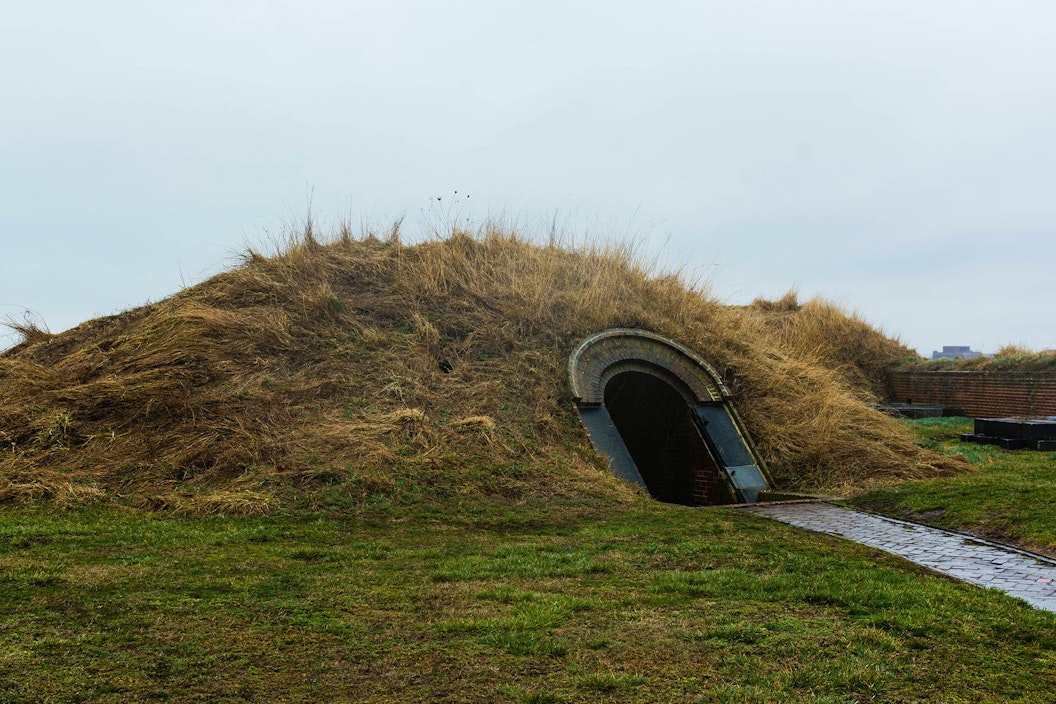
A source of American pride, Fort McHenry National Monument and Historic Shrine inspired "The Star-Spangled Banner." Enjoy ranger talks and flag changes.

Truth be told, I never knew that Fort McHenry was a national park site until I moved to the Locust Point neighborhood of Baltimore. In my defense, that was 20 years ago, and I know better now. Let me tell you what I have learned about our national parks, our American story, and what it takes to ensure both thrive now and in the future.
The house I live in, not far from Fort McHenry, was built in 1918 as the community surrounding the fort expanded to support a 3,000-bed military hospital for soldiers returning from World War I. By that point in history, the fort had already played a pivotal role in America’s unfolding story. First as a Revolutionary War era earthen fort known as Fort Whetstone, and later as the much more heavily fortified Fort McHenry overlooking the entrance to Baltimore harbor. In 1814, Fort McHenry and its 1,000 defenders turned back the British Navy following a ferocious 25-hour bombardment that inspired Francis Scott Key to write the poem, “The Defense of Fort M’Henry” from which “The Star-Spangled Banner” was adapted, and later the national anthem in 1931.
That is history’s headline, and there is so much more to the story of Fort McHenry.

While Francis Scott Key wrote of the United States of America as the “land of the free,” he also participated in the institution of slavery during his lifetime. National parks like Fort McHenry are our common ground, places where we can better understand the hard truths of our history and celebrate moments of triumph during the same visit. Collectively, our national parks — nearly 430 across the country — tell the story of who we are, our history and our heritage, where we reached high ideals, and where we fell short. As a nation, we are stronger together when we preserve and recognize a fuller story of America.
The story of Fort McHenry does not end with the War of 1812 and the Star-Spangled Banner.
During the Civil War, the church down the street from my home was a temporary garrison for Union soldiers deployed after President Lincoln declared martial law in 1861. Anyone suspected of being a potential threat to military operations was arrested and detained by Federal troops and held in Fort McHenry. After the Civil War, and until the outbreak of World War I, the fort was a primary point of entry for German and Irish immigrants before serving as a military hospital.
Today, Fort McHenry National Monument and Historic Shrine is a premier national park in a unique urban setting. Visitors can experience this place where history was made and where it is still being celebrated. Witness the Star-Spangled Banner being raised and even take part in a flag raising ceremony. Learn about the many diverse people who shaped American history across the expanse of two centuries and contributed to the thriving community of Baltimore. You can also explore the natural environment, walking along wetland trails surrounding the fort to view wildlife, to see firsthand how this coastal habitat has changed over the years, and what is being done to protect it for the future.
National park philanthropy is an essential part of the story, too.
The National Park Foundation’s support of Fort McHenry National Monument and Shrine is part of The Campaign for National Parks — the largest historic fundraising effort ensuring our national parks receive the support they need. Through the campaign, the Foundation will raise $1 billion by 2028. Park partners across the country are expected to raise an additional $3.5 billion.
The Foundation, its generous donors, and local park partners are already engaging youth through the Open Outdoors for Kids program providing grants for in-person and virtual field trips to Fort McHenry. Later this year, ParkVentures grantee Living Classrooms Foundation will support Fort McHenry’s largest annual event, Defenders’ Day, helping to expand the park’s programming to better represent and appeal to the diversity of Baltimore and to strengthen community ties to the park.
Remember, we all have a place in the story of America, and like me, you might find that connection closer than you imagined at a national park in your own backyard.